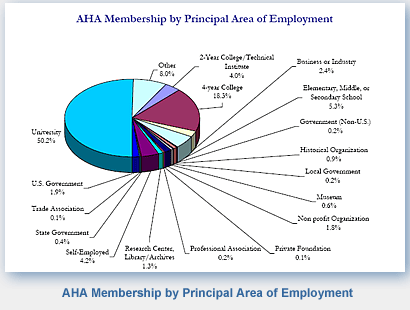Each year we take a snapshot of the AHA membership on March 31—an annual exam, if you will—to check the health of the organization. Happily, the number of members is doing well, growing a modest 1.3 percent to 14,903—the highest number of the members since the demographic bubble between 1965 and 1975.

Not surprisingly, sixty-two percent of the membership is affiliated with a four-year college or university. Thanks to recent increases in the number of graduate student members, they have become a larger segment of this population—now accounting for almost a third of the members at four-year institutions. Meanwhile the number of members employed outside of academia has also grown, due to the good recruiting efforts of our Task Force on Public Historians, and now comprises 18 percent of the membership.

Despite the recent increases in the number of graduate students, over 60 percent of the membership reported that they currently hold a PhD. But the AHA membership is becoming much younger, as members who earned their highest degrees since 1999 now comprise almost 40 percent of the membership.
A plurality of the membership (38.5 percent) specializes in European history, though that is just slightly ahead of U.S. history (which accounts for another 35.4 percent of the membership). The number of specialists in both fields has grown over the past decade, but more slowly than the number of historians working on other parts of the world.

Lastly, one of the most curious trends in our membership data over the past few years is the sharp increase in the number of specialists in religious history. It will come as little surprise that the hot topic of cultural history has grown significantly over the past two decades, but religious history has grown even faster—doubling over the past sixteen years. This year the two subjects reached parity, as both cultural and religious history were selected by 7.3 percent of the membership.

This post first appeared on AHA Today.
This work is licensed under a Creative Commons Attribution-NonCommercial-NoDerivatives 4.0 International License. Attribution must provide author name, article title, Perspectives on History, date of publication, and a link to this page. This license applies only to the article, not to text or images used here by permission.